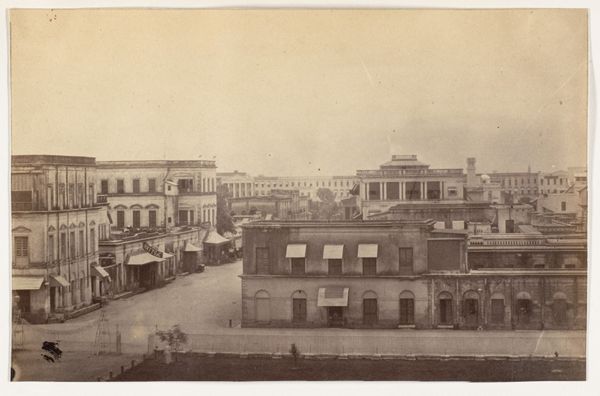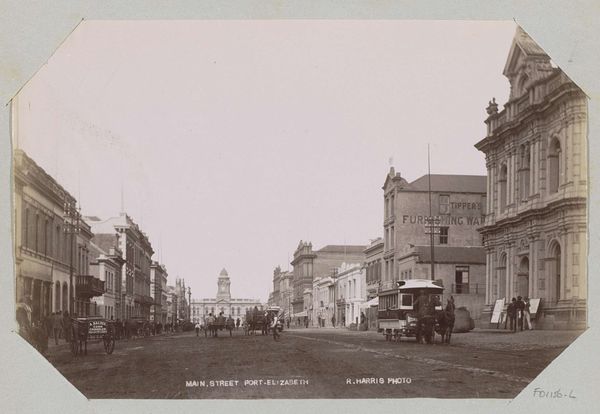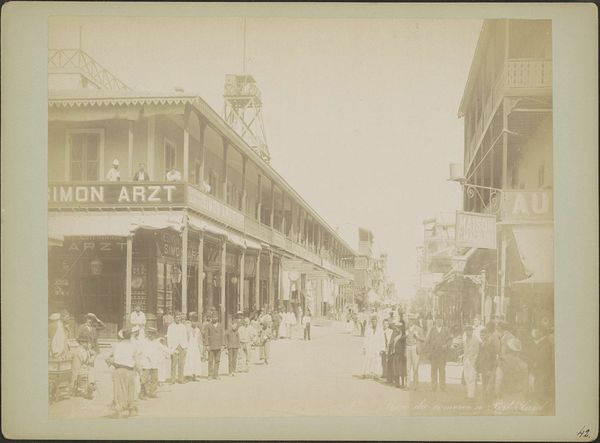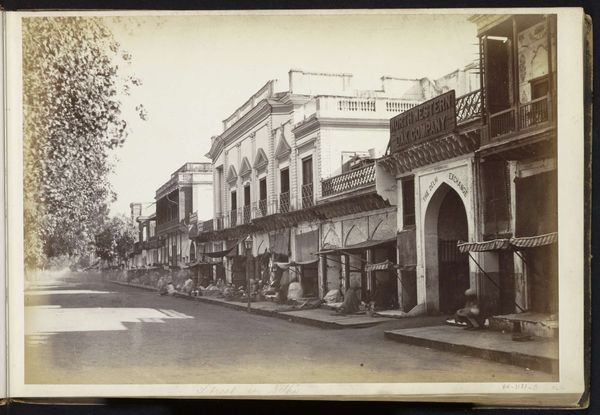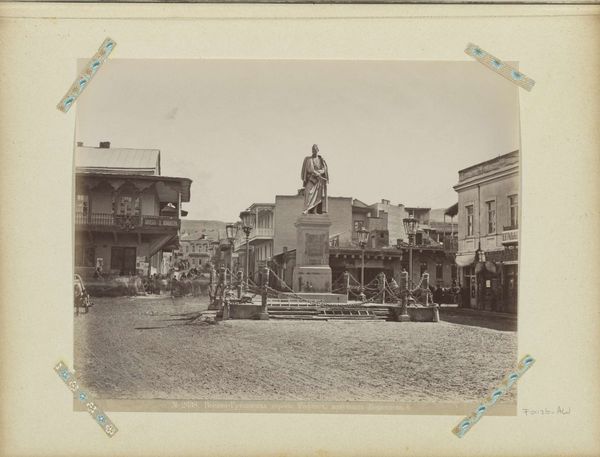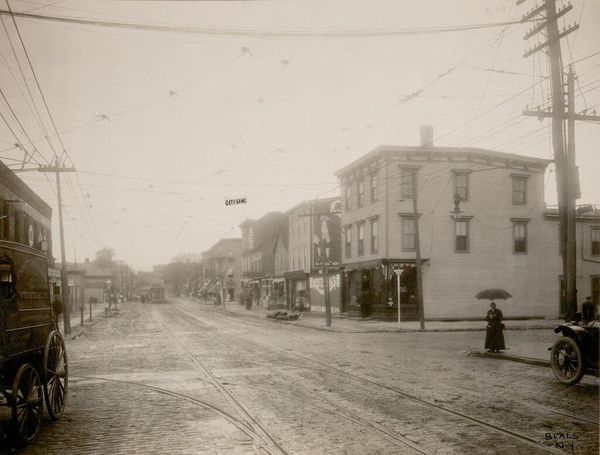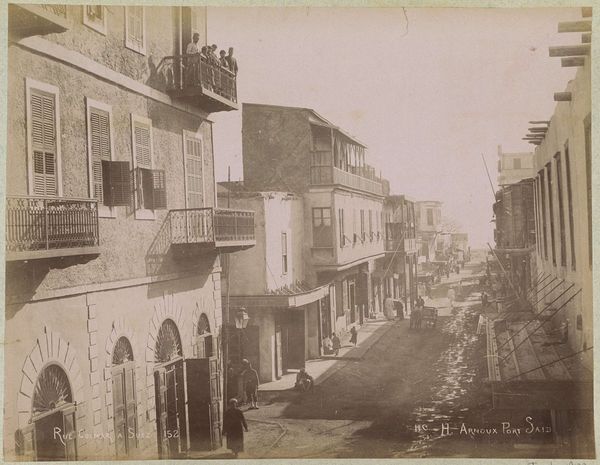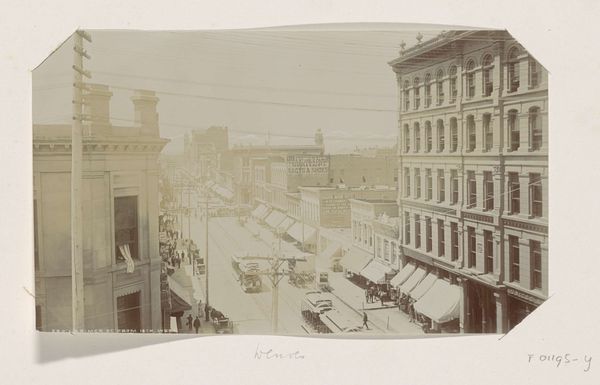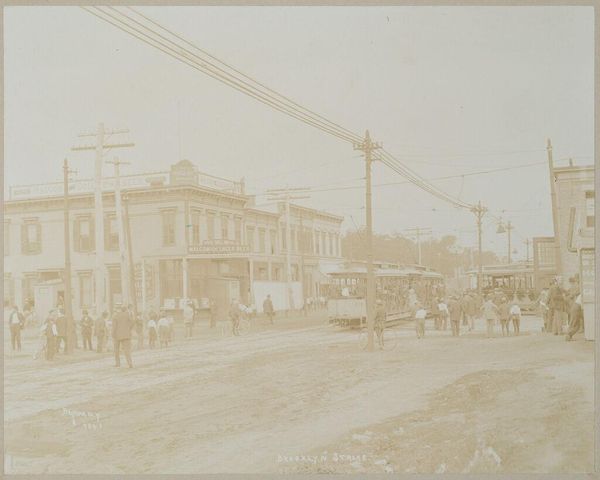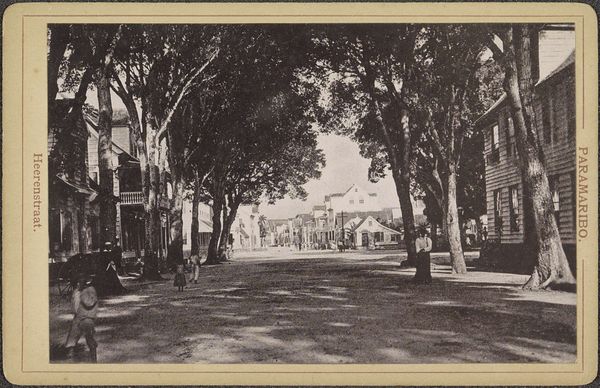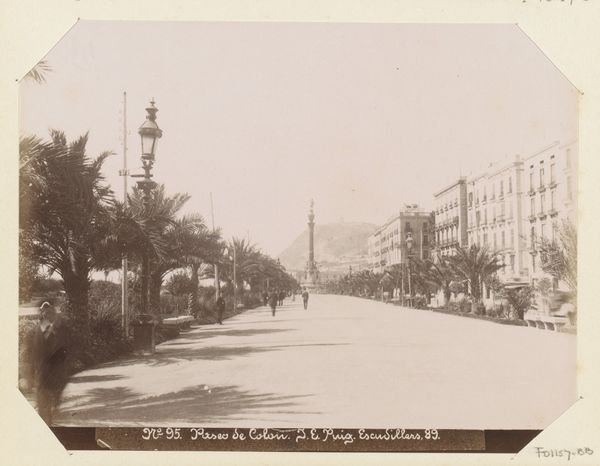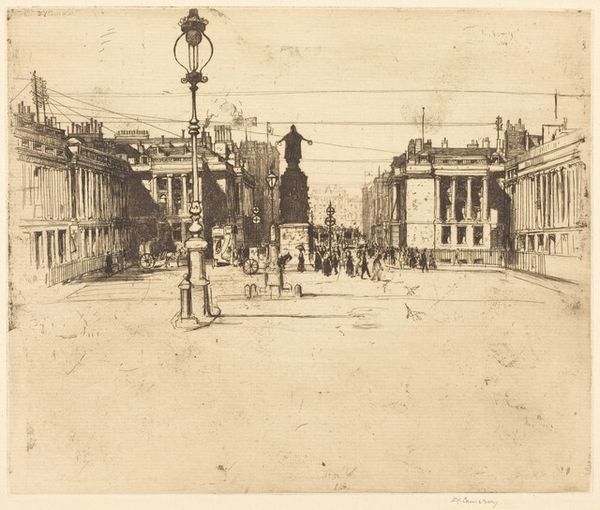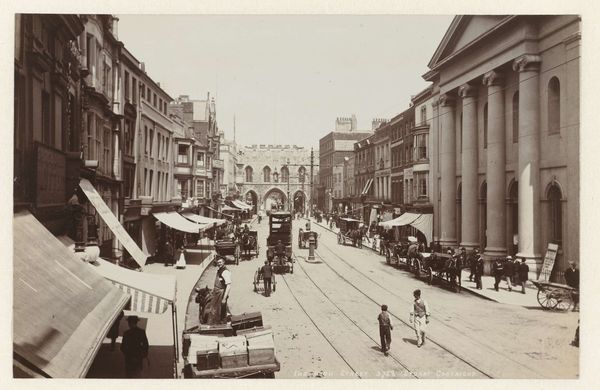
#
amateur sketch
#
aged paper
#
light pencil work
#
quirky sketch
#
photo restoration
#
pencil sketch
#
sketch book
#
personal sketchbook
#
sketchwork
#
old-timey
Dimensions: height 258 mm, width 360 mm
Copyright: Rijks Museum: Open Domain
Curator: Here we have “Gezicht op Weststreet te Durban, Zuid-Afrika,” dating from 1896 and attributed to T.O. Oole. What's your initial response to it? Editor: Stark. A rather still, bleached tonality. The architecture asserts itself—rectangular forms pressing down on that expansive road. I'm immediately struck by the contrast between these imposing buildings and the soft focus toward the horizon. Curator: Absolutely. The composition, you'll notice, relies heavily on linear perspective, drawing the eye toward the vanishing point downtown. The light, especially the way it hits the building facades on the left, serves to emphasize their geometric purity. Observe how these blocks, punctuated by rhythmic window openings, achieve an almost musical effect, wouldn’t you agree? Editor: The architecture may indeed achieve that effect, yet the wider picture reveals a bustling thoroughfare—horses and carriages, people bustling on foot. These aren’t just structural details. The image also speaks to South Africa's position within the global currents of trade, tourism and colonial society towards the end of the 19th Century. The signage itself underscores this historical moment. Curator: The signs! Excellent point. Consider the semiotic weight. These signs— "Tatterson's Hotel" and the name of another business -- punctuate the composition and are far from superficial; these marks create a powerful counterpoint to the architecture’s rather imposing mass. Editor: Yes, and while you dissect the geometry, I observe its socio-political texture. Notice those pedestrians of varied attire. This sketch isn't merely an architectural record. It's an inadvertent snapshot of social strata interacting and being defined. The sketch performs as a mirror reflecting a society's operations and distinctions in Durban during 1896. Curator: Well observed! Perhaps the work lies within this tension - the relationship between that seemingly immutable facade and the shifting scene before it. It is within that visual disjuncture that its enduring power lies, wouldn't you say? Editor: I’d argue the drawing resonates precisely because of its unassuming posture. It captures, however inadvertently, a fleeting instance of transition, freezing social structures in a time when transformation and mobility increasingly began reshaping South African, colonial spaces. I appreciate its historical resonance so much more now. Curator: Likewise, noticing those linear planes interwoven into dynamic movement makes the visual schema remarkably enriched!
Comments
No comments
Be the first to comment and join the conversation on the ultimate creative platform.
